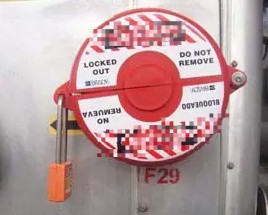Modern machinery can contain many hazards to workers from electrical, mechanical, pneumatic or hydraulic energy sources. Disconnecting or making the equipment safe to work on involves the removal of all energy sources and is known as isolation.
Lockout-Tagout refers to the safety procedure used in industry and research settings to insure that dangerous machines have been properly shut-down and are incapable of being started up again prior to the completion of maintenance or servicing work. It requires that all hazardous energy sources have been identified isolated and rendered inoperative to prevent the release of potentially hazardous energy prior to the start of any repair or maintenance procedure. This is accomplished through the locking and tagging of all energy sources. Some common forms of energy isolation include electrical circuit breakers, disconnect switches, ball or gate valves, blind flanges, and blocks. Push buttons, e-stops, selector switches and control panels are not considered proper points for energy isolation.
Lockout consists of placing a disconnect switch, breaker, valve, spring, pneumatic assemble, or other energy-isolating mechanism in the off or safe position. A device is placed over, around, or through the energy-isolating mechanism to lock it in the off or safe position, and only the person attaching it applies a removable lock to the apparatus.

Post time: Dec-18-2021






